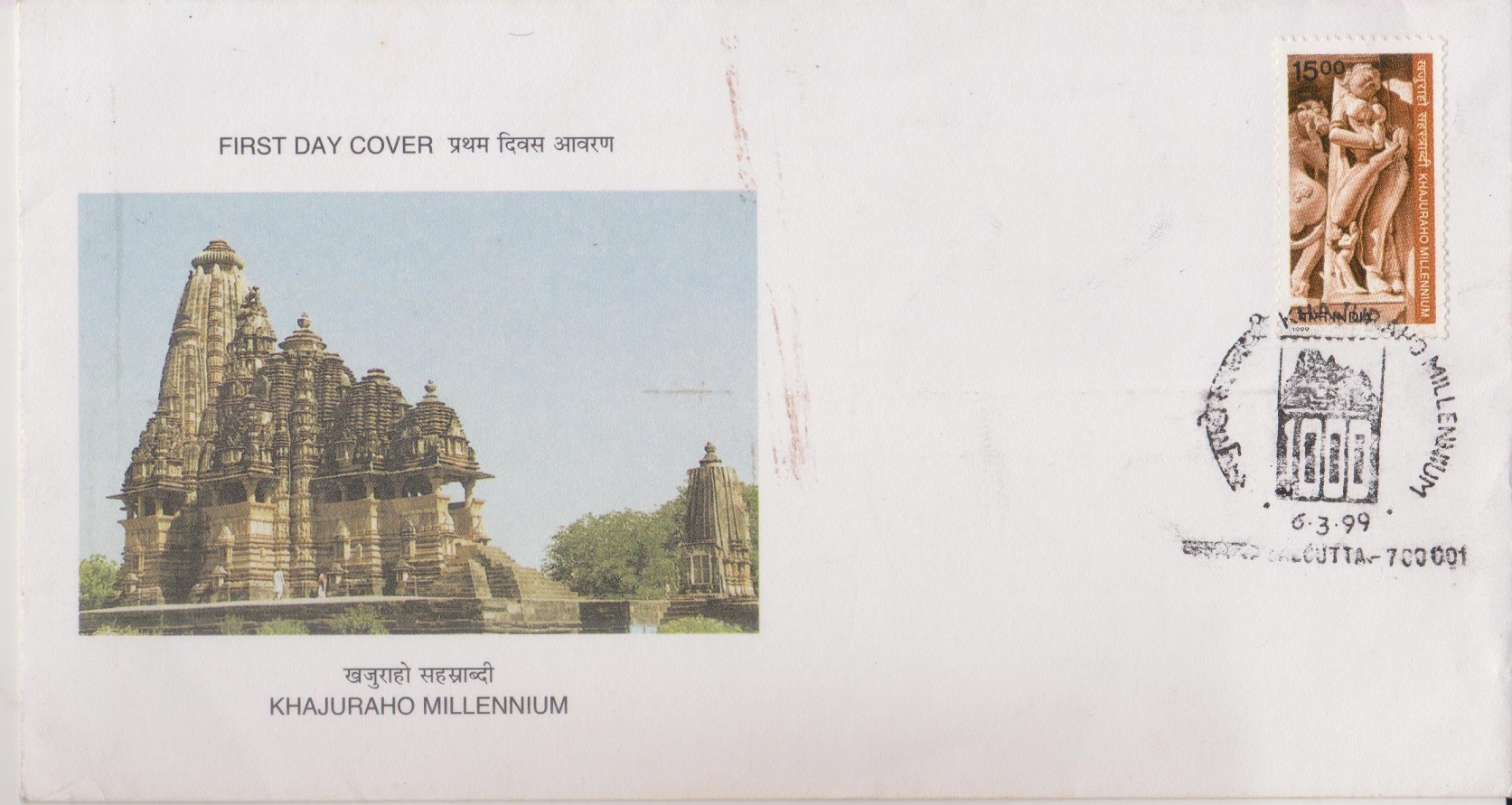
Khajuraho Millennium
A commemorative postage stamp on the Millenary of the Khajuraho Group of Monuments, UNESCO World Heritage Site :
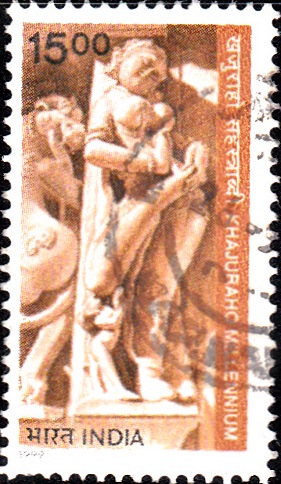
 Issued by India
Issued by India
Issued on Mar 6, 1999
Issued for : The temple of Khajuraho were built during the ninth to twelfth century A.D. The Department of Posts is happy to issue this stamp in commemoration of one thousand years of Khajuraho.
Design : The stamp depicts one of the Khajuraho sculptures, “Apsara removing a thorn from her foot”. A picture of the Visvanatha temple dated 999 A.D. is shown on the First Day Cover.
Credits :
Stamp & FDC : Based on material supplied by the Archaeological Survey of India.
Cancellation : Alka Sharma
Type : Stamp, Postal Used
Colour : Multi Colour
Denomination : 1500 Paise
Overall size : 4.06 x 2.28 cms.
Printing size : 3.71 x 1.93 cms.
Perforation : 13 x 13
Paper : Imported unwatermarked Adhesive Gravure Coated Stamp Paper in Sheets 50.8 x 53.5 cms.
Stamps Printed : One Million
Number per issue sheet : 50
Printing Process : Photogravure
Printer : India Security Press, Nashik
About :
- Khajuraho, the ancient city of temples, is situated in District Chhatarpur in the heart of Central India.
- The Khajuraho region, known in ancient times as Vatsa came to be called Jejakbhukti in medieval period and was renamed in the fourteenth century as Bundelkhand. Under the patronage of the flamboyant Chandella rulers like Yashovarman, Dhang, Gund and Vidhyadhara, the region witnessed a glorious era of art and architecture. The cultural heritage services in the form of the tall temples of Khajuraho profusely decorated with elegant and exotic sculptures. The Chandella rulers also built tanks, forts and palaces. The temples were mainly concentrated in their strongholds of Mahoba, Kalinjar and Ajaigarh. According to the tradition Khajuraho originally had eighty five temples, but only twenty five survive today. The Khajuraho temples mark the culmination of Central Indian temple style with distinctive features in plan and elevation. They are compact lofty temples without any enclosure wall and are erected on high platforms (jagati). Most of the temples have essential elements of temple plan viz., porch (ardhamandapa), hall (mandapa), entablature (antrala) and sanctum (garbhagriha). Some of the larger temples at Khajuraho have subsidiary shrines on the four corners of the platform, known as panchayatana temples. The temples belong to Brahmanical and Jain pantheon and are dedicated to Siva, Vishnu, Surya, Devi and Tirthankaras.
- The temples at Khajuraho can be divided into three groups namely Western, Eastern and Southern. The Western group which includes Lakshman, Jagdambi, Kandhariya, Chitragupta and Vishvanath temples is the most important. Most of the temples of Khajuraho are decorated with beautiful sculptures of gods, goddesses, apsaras, sura-sundaris, animal figures, etc. of all the sculptures, the apsaras or sura-sundaris are the most impressive.
- Text: Based on material supplied by the Archaeological Survey of India.


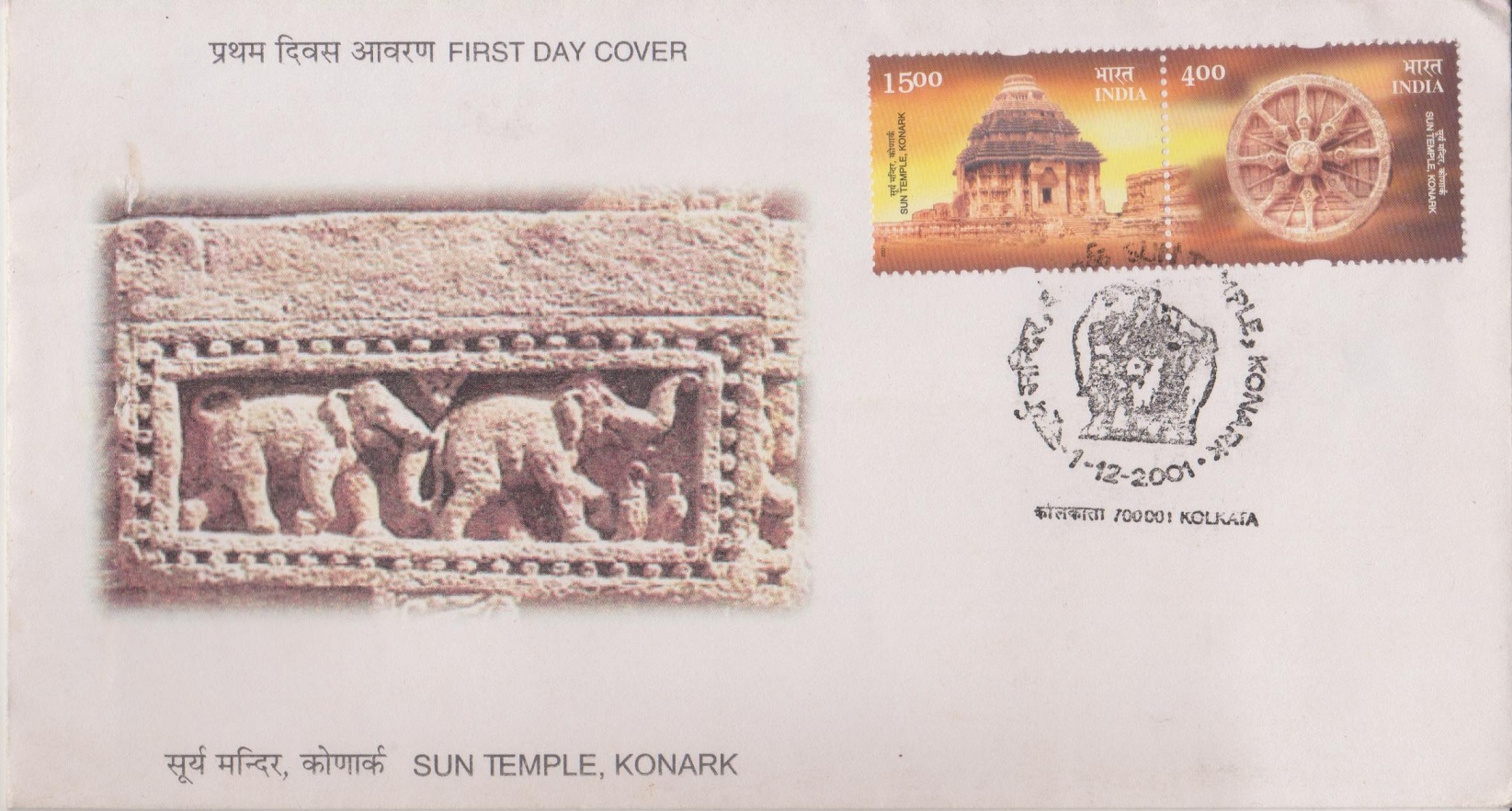
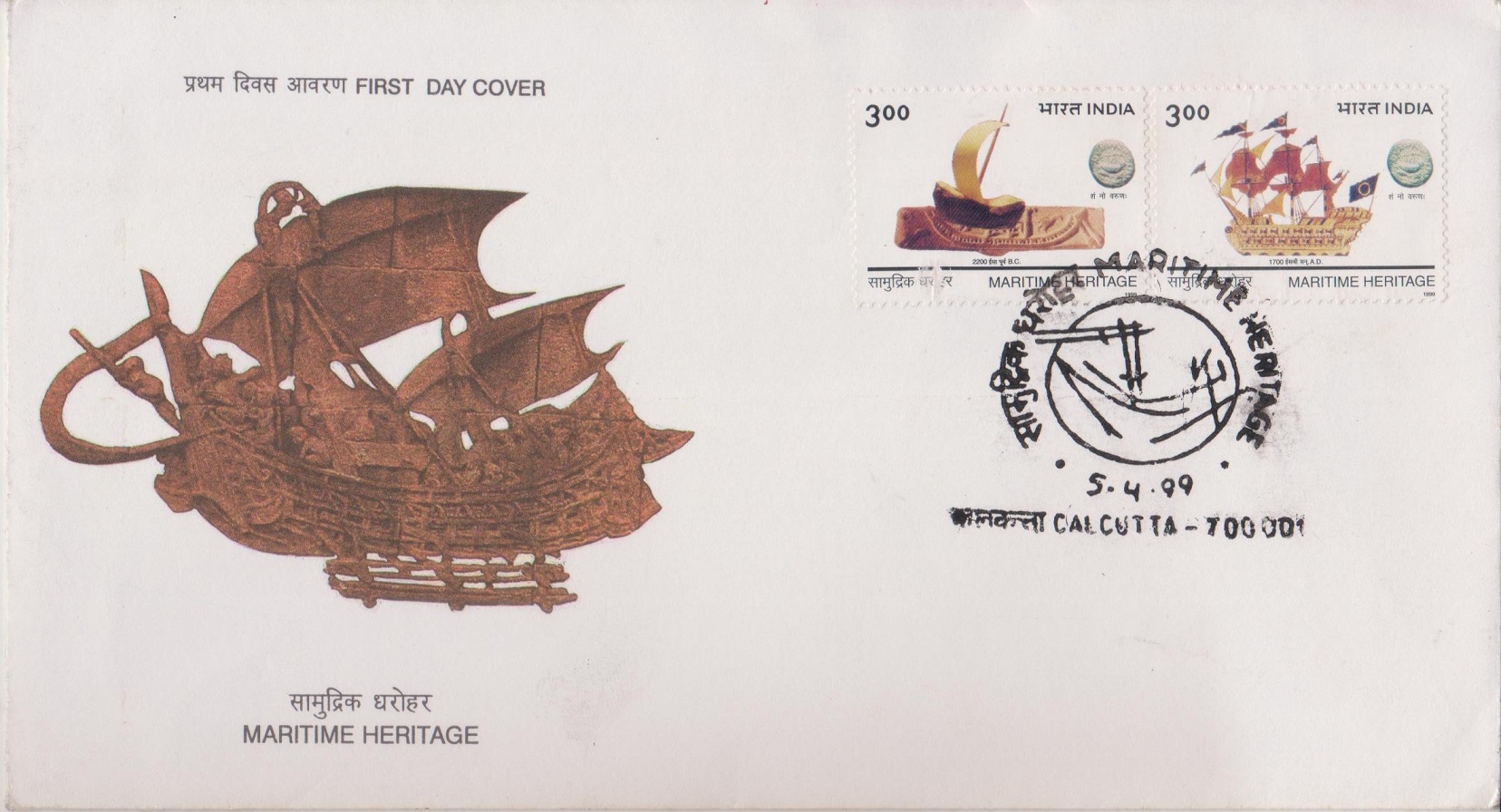
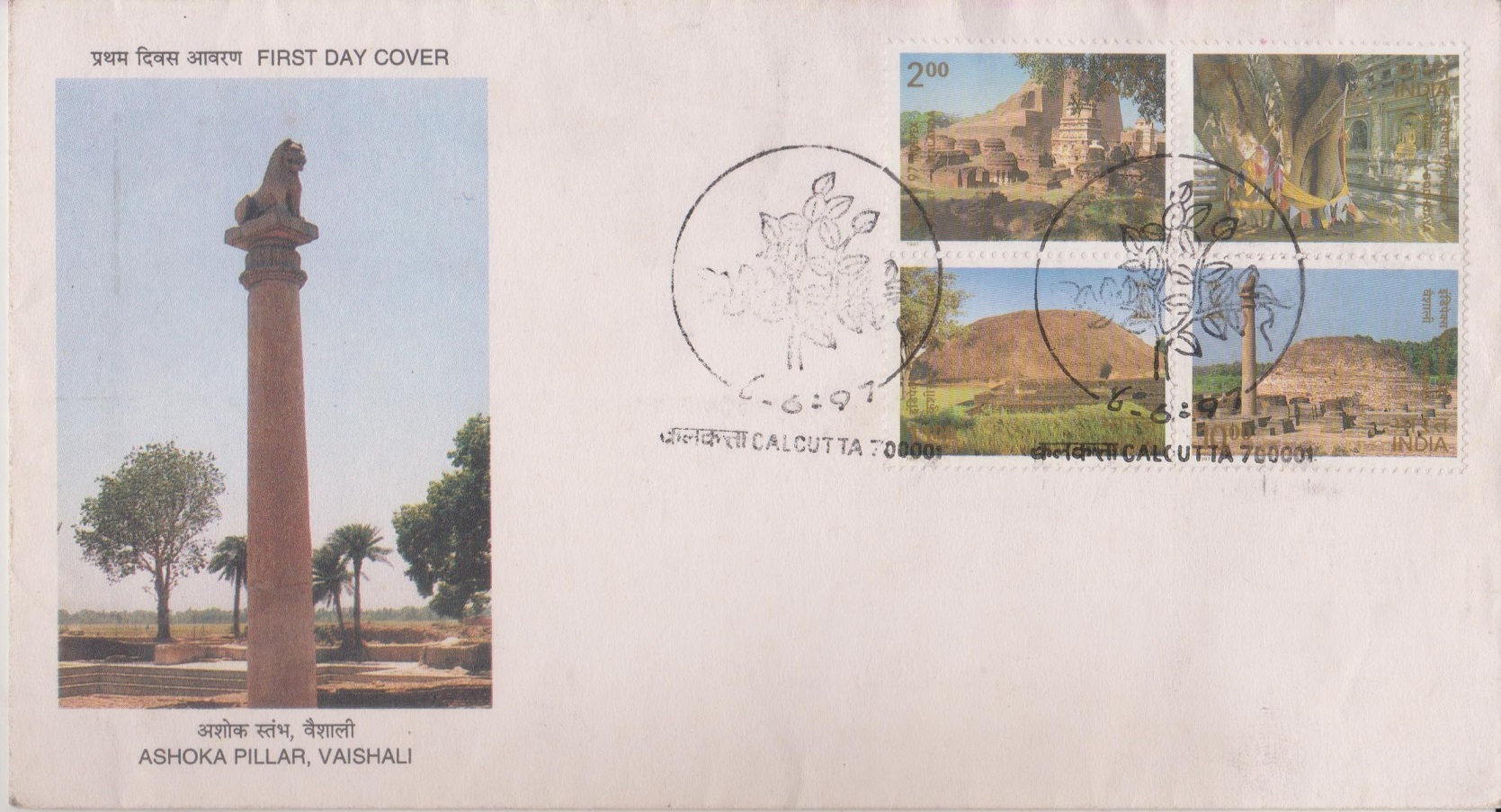
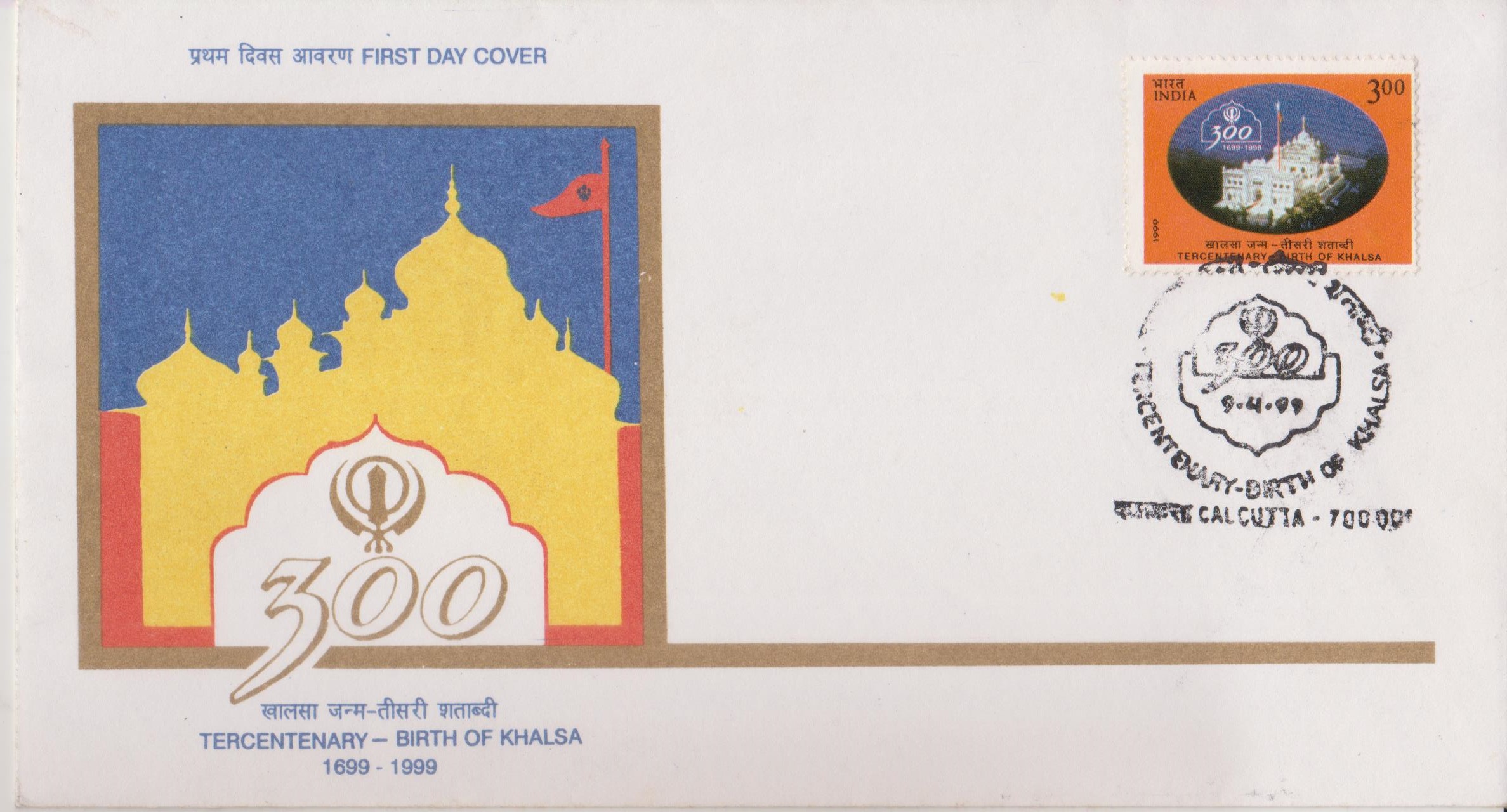
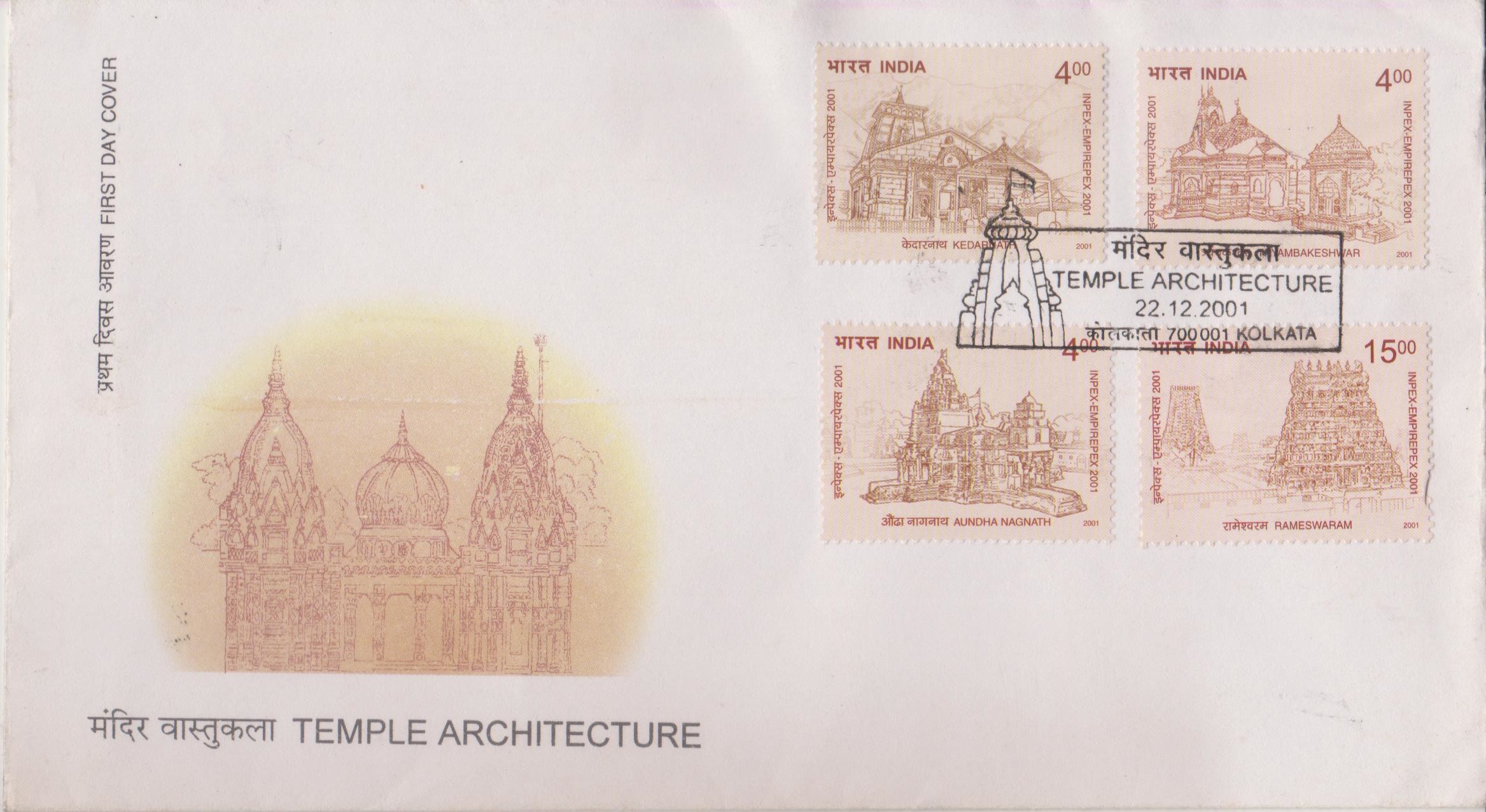
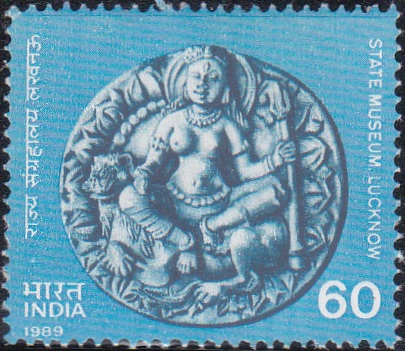
In the existance of my life while carefully & happily treading on the sand of time came across this postal stamp of Millennium Khajuraho temples with Apsara removing a pricked thorn from her foot ,a Bankbill currency note of state of Gibrater depicting the advent of 3rd Millennium & Of course a personal stamp of my image known as My stamp lucky scheme issued by Indian postal Department.Om Sai Ram.